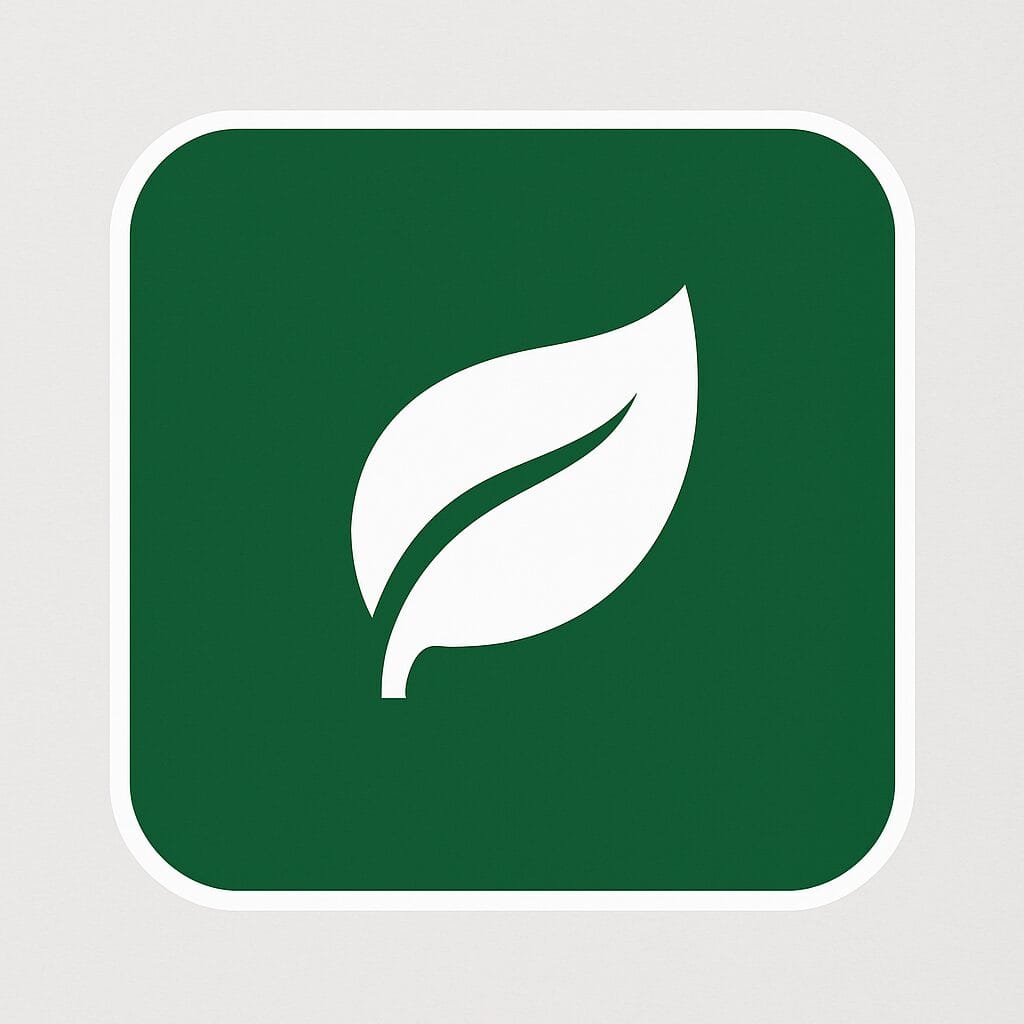
Table of Contents
ToggleWhat are sponge city rooftop systems ?
So straight to the point, Sponge City rooftop systems are an innovative urban solution designed to absorb, store and slowly release rainwater using the sponge city concept. It is inspired by the broader “sponge city” concept. In this concept cities are built to function more like sponges than concrete slabs. And for those who don’t know what a sponge is, it’s something that absorbs and stores water.
Unlike conventional Green roofs that are built only for aesthetics or temperature control, sponge city rooftops are strategically engineered for stormwater management. They are integrated with – permeable drainage mats, specialised soil media, native vegetation and Temporary water storage zones. This article is like a book based on sponge city rooftop systems, including its benefits examples and challenges.
How urban rooftop sponge systems work ?
Like any other drainage system urban rooftop sponge systems also mimic the natural water cycle right above our heads. At their core they use layered, absorbent materials to temporarily store rainwater and slowly release it.
Key components and how they interact-
Engineered Soil Mix: Regular soil is heavy but A lightweight blend is designed to absorb water without collapsing. It also helps to filter pollutants before they reach drains.
Water-Retaining Layers: Beneath the soil it includes high high-capacity drainage board for a retention mat that can hold excess rainwater during heavy storms- it acts like a rooftop sponge.
Vegetation Cover: In sponge city rooftop systems native plants or drought-resistant greenery are chosen for their ability to survive on minimal water while promoting inspiration. Vegetation in a vertical forest.
Overflow Controls: integrated outlets or weep holes prevent structural overload by slowly directing excess water to external stormwater systems or reuse tanks.
Unique integration strategies
Modular Tray Systems: Some cities are using prefabricated trays that are filled with sponge components. These trays are swapped or rotated seasonally, making maintenance faster.
Rooftop Bioswale Hybrids: A few pilot designs merge green roof features with Bioswale-like channels that filter and detain runoff before it flows off the edge.
Smart Sensors: In advanced designs like Melbourne or Copenhagen, sensors track moisture levels, trigger irrigation and drain release automatically. This automation enhances stormwater regulation without human intervention.
These systems aren’t just passive green roofs- they are active urban infrastructure that helps modern cities to adapt to increasing rainfall and climate extremes.
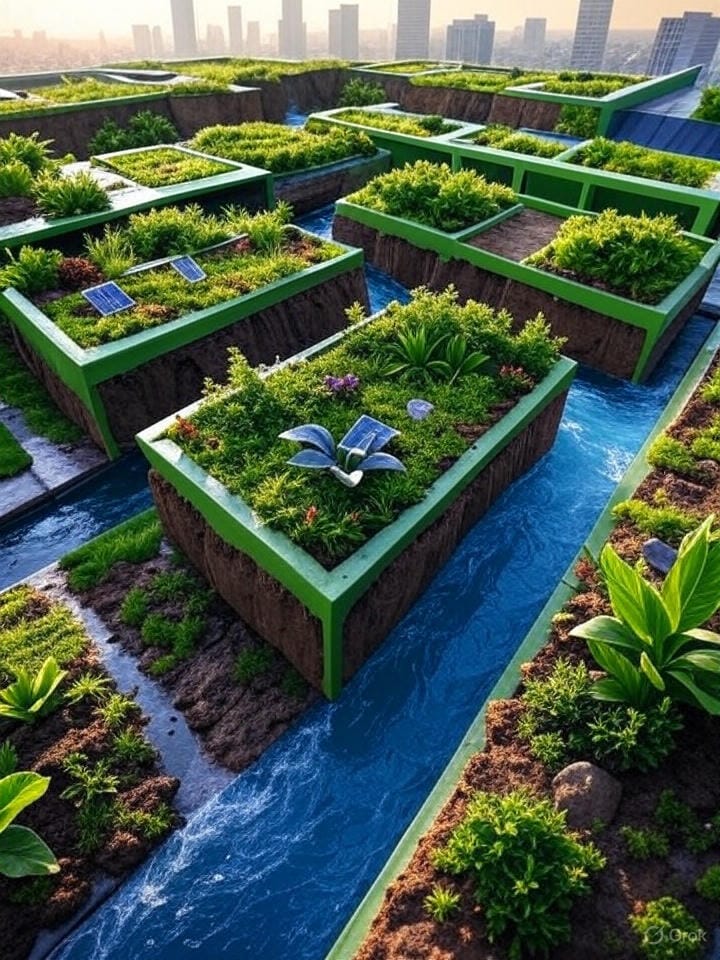
Green roof stormwater management
The problem
Before installing green roof every owner thinks why it matters in cities ? So in short, because of Too much rain and very little absorption. Urban areas are filled with hard surfaces roads rooftops and Pavements that don’t absorb water. When it rains, all the water runs off quickly into sewers especially during heavy storms and this issue causes extreme pressure on traditional drainage systems. And all this leads to
- Flash flooding in low-lying areas
- Sewage overflows, especially in older cities having combined sewer systems
- Pollution of rivers and lakes due to unfiltered runoff
- Strain on water treatment plants
The solution: How green roof help stormwater management
A well designed green roof acts like a natural sponge and it has some Characteristics of BLUE ROOF. Here’s how –
1. Absorbs rainfall: The soil and vegetation layer captures rainwater right where it falls. Green roofs can actually retain 50-90% of rainfall depending on the season.
2. Slows down runoff: Even when water does drain off, it moves more slowly which helps to reduce the peak volume entering sewers at once. This is called peak flow delay. That’s a huge benefit during intense storm events.
3. Filters pollutants naturally: when the rain passes through the vegetation and substrate it gets partially filtered out. Heavy metals, dust and other surface pollutants get removed before water exits into drains.
4. Reduces sewer Overflow Events: Many old cities have outdated and combined sewer systems that are not effective. The vegetation helps to avoid raw sewage discharges during storms, keeping water bodies cleaner.
5. Protects Building lifespan: Green roofs reduce pooling, leaking and damages to waterproof membranes by managing water directly on the rooftop. It also helps in lowering long-term building maintenance costs.
Why sponge city rooftop systems matter more ?
We know that climate change is increasing rainfall intensity especially in urban areas prepare for it. Older cities have drainage systems that are not too effective and can’t handle modern rain events. Instead of digging up to rebuild the sewer network this green infrastructure offers a faster and cheaper nature-based solution.
According to the DC Department of Energy & Environment‘s report, A typical green roof in Washington D.C. retains about 15 gallons of stormwater per square foot annually—roughly 630,000 gallons per acre each year.
According to the City of Philadelphia’s official stormwater manual, an extensive green roof with 4 inches of growing media typically retains up to 55% of annual rainfall in the region.
What is Sponge city rooftop Design ?
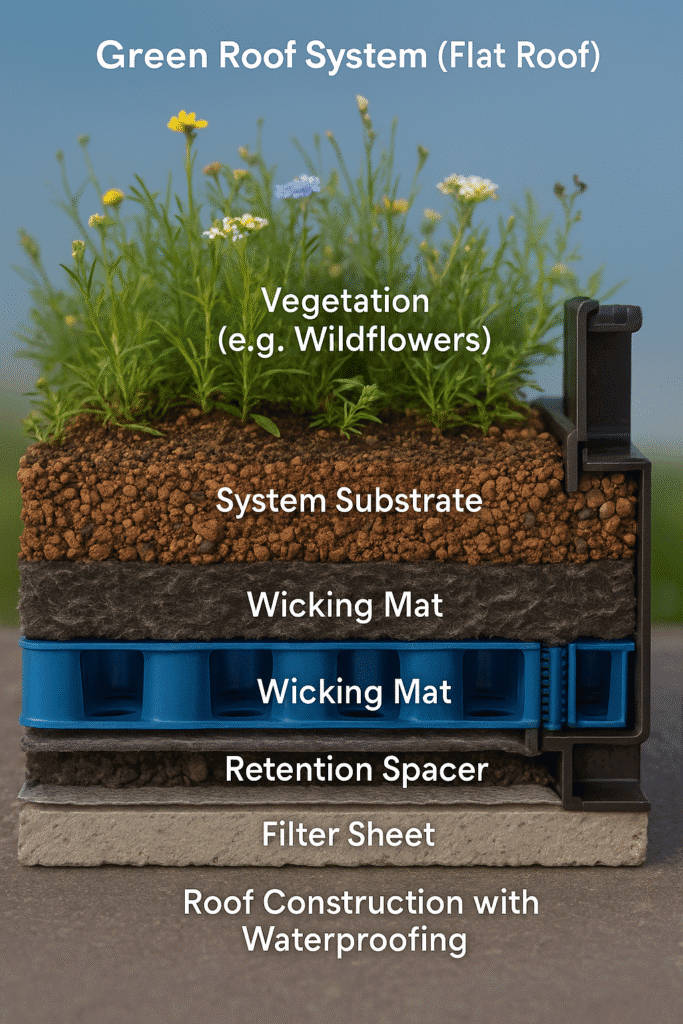
Sponge city rooftop design isn’t just about planting vegetation it’s all about creating a high-functioning water management layer that performs under real urban conditions. Below are the most effective and field-tested design principles-
1. A functional Layer not aesthetic
Every rooftop sponge system should have multiple functional layers to increase effectiveness.
- Vegetation layer (native and drought-tolerant)
- Engineered growing media for water filtration
- drainage + retention layer to hold stormwater
- waterproof membrane to protect the building structure
These are the 4 most important layers and skipping or compromising on these layers reduces efficiency and risks roof damage over time.
2. Minimum substrate Depth: Go beyond basics
While most green roofs use 3-4 inches of substrate, the sponge system requires deeper soil like 5-8 inches because-
- To retain more stormwater
- Support the root systems of functional plants
- Improve filtration of urban runoff
The sponge system requires Deeper soil because it dramatically improves stormwater retention capacity per square metre.
3. Incorporate Retention + Detention in one system
Many cities mistakenly install either detention (temporary storage) or retention (long-term soaking) systems. Sponge rooftops should integrate to absorb normal rain as well as hold sudden downpours during peak storm events. This dual-mode operation prevents overflow and reduces stress on sewer systems.
4. Slope and Flow direction matter!
Designing a 1-2% Slope helps water drain to move toward retention zones or outlets. Flat roofs lead to pooling, root rot and plant failure unless perfectly managed. Also, strategic water flow channels ensure no signal point is overloaded during a storm.
5. Favour Design for Maintenance access
Do you know what’s a common design failure ? It’s zero access for maintenance during the early days. Good designs include
- Walkable pavers or stepping stones
- Easy to remove vegetation trays
- Clearly marked drainage access points
This reduces long-term costs and encourages routine inspection.
6. Climate Adaptive Design
Don’t think that what works in London will also work in Los Angeles. Climatic conditions are different in various places. So an ideal sponge city rooftop system must be –
- Climate-matched to local rainfall and temperature
- Plant zone aligned for seasonal performance
- Retrofittable to existing roofs with minimal structural upgrades so that everyone can install.
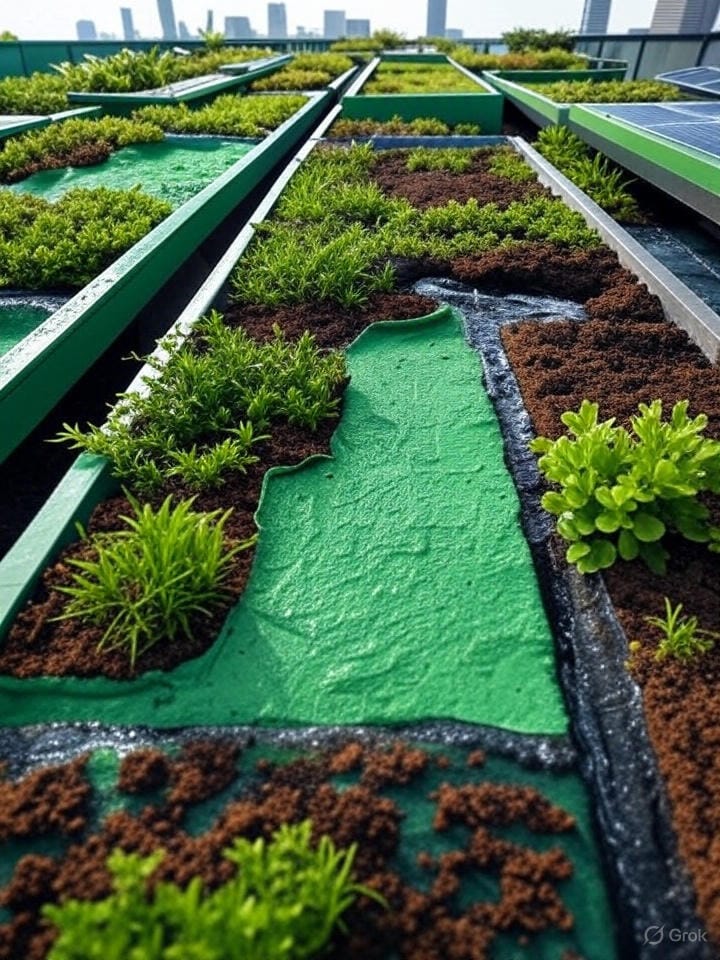
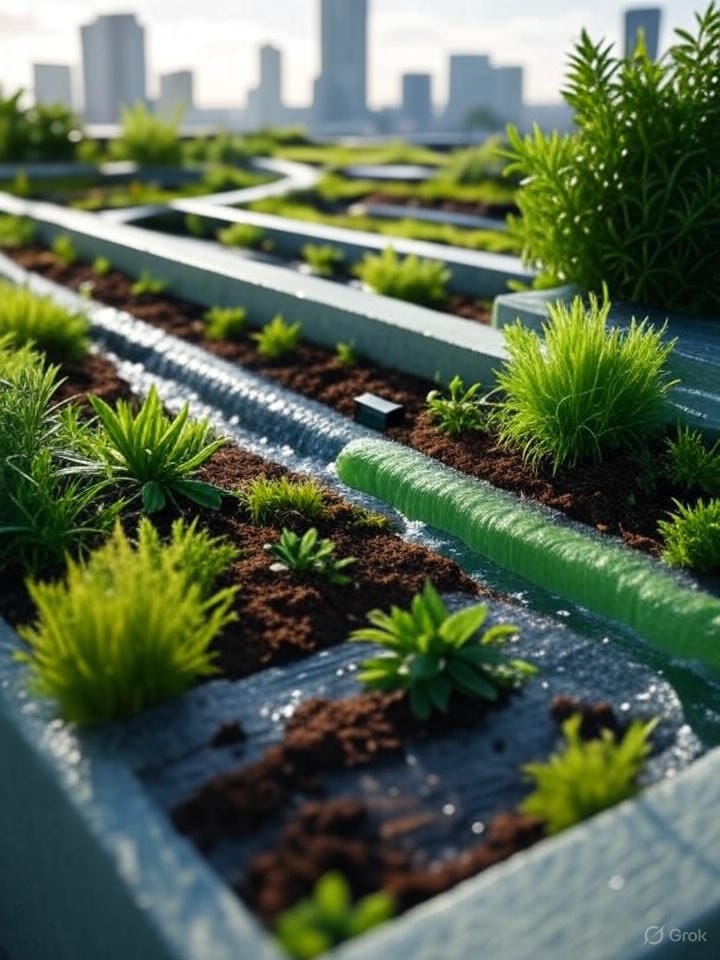
Sponge rooftops real life examples
Brooklyn Grange Green Roofs
It is one of the largest rooftop farms in the world, spanning over 5 acres across multiple buildings. It has a perfect stormwater impact, each rooftop captures and retains 2 million gallons of rainwater annually. It is known for its uniqueness because it has combined stormwater control with urban agriculture like green herbs and honey production.
Augustenborg Eco-city Roofscape, Malmö
This is an early pioneer in using sponge City design including Green roofs on apartment and public buildings. It has prevented 100% of flooding during a once-in-50-year rain event. The roof uses modular tray systems that make maintenance and expansion easier. It gives us a lesson that even older buildings can be retrofitted with a modular sponge system.
City hall podium green roof, CANADA
A 35000 square feet green roof is made on top of Toronto’s iconic City Hall podium. It can hold up to 1.5 inches (38mm) of rainfall per event before draining. It features native plants, public pathways and educational signage that make it a public space and sponge system at once. Rooftop sponge systems can double as a screen for public spaces.
FAQs
How much water can a sponge city rooftop absorb ?
It all depends on size, design and location but on average sponge City rooftop systems can retain between 15 to 30 gallons of rainwater per square foot annually. Over a year, this can add up to hundreds of thousands of gallons for a single acre which significantly reduces stormwater runoff.
What are the benefits of sponge city rooftops systems ?
Sponge city rooftop systems offer multiple benefits –
- Stormwater runoff reduction
- Urban cooling (mitigating heat islands)
- Improved biodiversity and air quality
- Longer roof life
- And in some cases if the rooftop system is large then it also helps in lowering energy costs for buildings.
What is the difference between green roofs and sponge city rooftops ?
While green roofs are a key component, sponge city rooftops go beyond just vegetation. They may include blue roofs which store water temporarily, permeable surfaces and smart drainage systems. The goal of a sponge rooftop is to manage water more holistically rather than just absorbing it. Sponge rooftops also control water flow, storage and reuse in urban environments.
